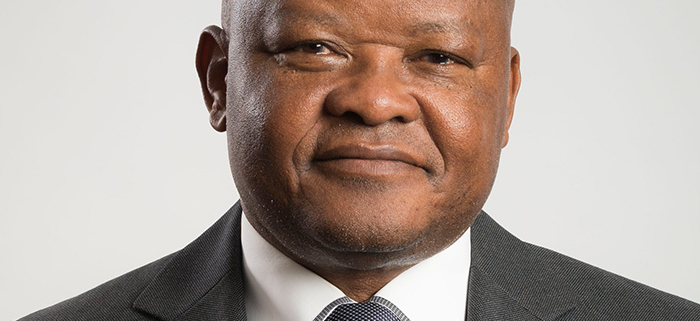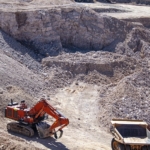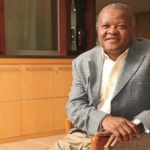Macozoma’s Ntsimbintle has vehicle for manganese consolidation following Gilbertson ouster
THE ousting in mid-October of Brian Gilbertson from Australia’s Jupiter Mines will have important consequences for South Africa’s manganese industry as it hands management control to the ambitious Ntsimbintle Holdings, the company largest shareholder.
Ntsimbintle Holdings is 74% controlled by Safika Resources, a branch of Saki Macozoma’s industrial empire. Macozoma has tended to operate away from the limelight, but in 2019 he nearly listed Ntsimbintle Mining, only to pull the proposal at the last minute.
Market reasons, partly related to China volatility, were cited for the withdrawal of the listing. It’s a pity it didn’t proceed considering the rollercoaster ride manganese prices have been on. Currently, the metal is much in demand both as a hardening agent for steel, but also for its potential use in electric vehicle battery production.
Ntsimbintle Mining owns 51.1% of Tship Borwa, a highly profitable mine in South Africa’s Northern Cape province. The other 49.9% of Tshipi is owned by Jupiter Mines, which makes the ousting Gilbertson all the more interesting.
One line of speculation is that with Gilbertson and Jupiter’s CEO and Gilbertson long-time partner Priyank Thapliyal out of the company, Ntsimbintle has the listed vehicle it desires, and more to boot.
Jupiter Mines is developing a portfolio of mines in Australia’s Yilgarn Valley. Ntsimbintle also has OM Holdings, a Singapore-based business with a smelter complex Sarawak in Malaysia, as a shareholder. Back in South Africa, Ntsimbintle recently opened the Mokala mine with Glencore as a minority shareholder.
The sum of these business interests is that Jupiter is a company with influence and geographic reach with access to an operating base in South Africa where most of the world’s manganese is found. As such it’s a powerful force for consolidation which was one of the reasons Macozoma wanted a listing.
“We are listing for the currency, not the cash,” said Mazocoma in an interview with Miningmx in 2019 before the company decided not to proceed with the IPO. “The currency is for the purpose of consolidation. If we are going to do consolidation in the Kalahari manganese fields, the best way to do that is with paper which is listed. It provides a price, even if you like it or not,” he said.
Under Gilbertson and Thapliyal, Jupiter was a passive vehicle, said one of its major shareholders, AMCI – the US-based minerals investor and trading house during the general meeting that ousted Gilbertson. Focused on paying out dividends, the company didn’t give enough attention to the growth and expansion possibilities before it, AMCI said.
“The CEO has not taken proactive steps to address the diminishing value of the company … and has failed to pursue … any material shareholder value-creating opportunities,” said AMCI director, and Jupiter Mines board member Hans-Jürgen Mende.
Replied Gilbertson: “Those [remuneration] arrangements were set out and entrenched from the outset. I really have not felt that they needed to be changed.” As an explanation, it seemed insufficient, especially as 95% of Jupiter Mines shareholders had voted against the remuneration report in 2021 and 93.4% voted against the 2020 report.
Board statements aside, when the task of voting for the re-election of Gilbertson to the board came up at the general meeting, the conclusion was inevitable. About 78% of shareholders voted against it as well as for the removal of Thapliyal which was another of the resolutions.
It was a sad way for Gilbertson to bow out of public service though it will do nothing to diminish his stature in South Africa mining.
As Gencor boss, he oversaw the creation of the modern Gold Fields, the development of Impala Platinum and the international listing of Billiton, the forerunner to BHP Billition (now BHP), the world’s largest miner.
Written by: David McKay | Originally posted on miningm


